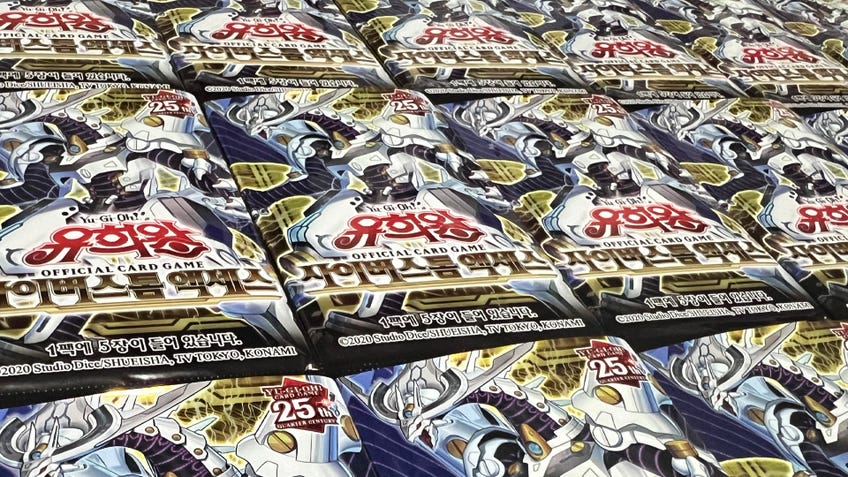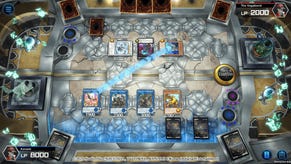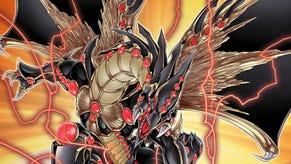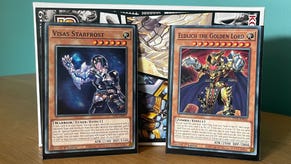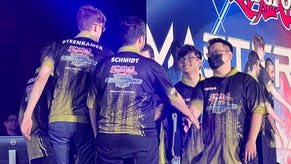South Korea’s Yu-Gi-Oh! scene is a TCG community unlike anywhere else in the world
The heart in the cards.
The circumstances surrounding Yu-Gi-Oh! in Korea are a fascinating one, in part because its history isn’t a mirror to the understood narrative found elsewhere in the world. It’s the only region outside of China with official localisation support not handled in-house by publisher Konami, while the release schedule and pricing of its booster packs also differs to those found elsewhere. The result of this is a unique community: a strong niche within a region dominated by imported card game giants like Magic: The Gathering and Pokémon, alongside a mix of domestic TCGs and more niche franchises like Cardfight Vanguard.
Yet, in spite of a passionate fanbase, and a healthy competitive scene both online and in the card stores that hide amidst the highrise buildings of Seoul and other cities across South Korea, it’s a region whose players and history remain broadly under-explored. So I went to Korea to understand this regional game for myself.

But first, a bit more on that history.
Yu-Gi-Oh! as a franchise evolved heavily from its origins as a brooding psychological thriller in the pages of comic magazine Shonen Jump to a card game fighting manga to the multi-billion dollar franchise we know today. Early chapters of Kazuo Takahashi’s manga don’t even centre on anything similar to the ubiquitous trading card game, and the first anime in the series based on these chapters has remained mostly a relic and curio of a possible future that never came to be after the Duelist Kingdom arc and newer anime transformed the series. In this time Bandai unsuccessfully attempted to adapt the card game into real life, before Konami turned it into a phenomenon with its own take in 1999.
The early years of Yu-Gi-Oh! in Korea saw a rapid-fire localisation of many of the early structure decks and booster packs on a near-monthly basis.
Confident with its domestic success, Konami sought partners for global expansion. In the West, this came in the form of a short-lived and tumultuous partnership with Upper Deck Entertainment that ran until 2008 when the company regained control of the licence and directly distributed the title in English markets.
In South Korea, this responsibility was handed to Daewon. Having been founded in the 1970s as a production studio assisting on everything from Toei’s Galaxy Express 999 to Hanna Barbera cartoons, it moved into comic and product distribution in the 1990s and took advantage of a normalisation in post-World War II relations between Japan and Korea and the legalisation of cultural imports from Japan to successfully localise and transform franchises like Pokémon and Crayon Shin-Chan into household names. In 2003 and 2004 they took control of the Yu-Gi-Oh! IP in the region, localising the anime and releasing the first Yugi and Kaiba structure decks in December 2003.
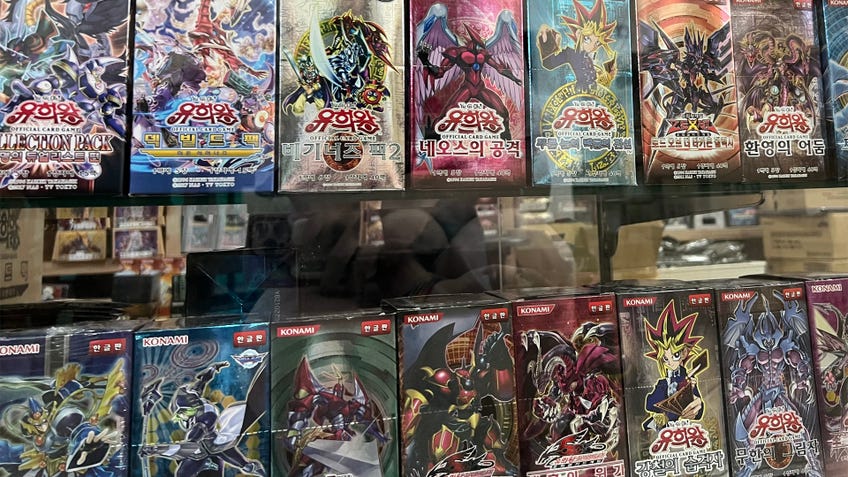
Prior to the official localisation of Yu-Gi-Oh! into Korean, a small dedicated community had begun to import many of the cards from other regions, such as nearby Japan. The later launch of the series in the region meant that by the time the game was being localised into Korean, the series was already many years behind its counterparts in both Japan and English-speaking regions. As a result, the early years of Yu-Gi-Oh! in Korea saw a rapid-fire localisation of many of the early structure decks and booster packs on a near-monthly basis.
Rather than directly emulating the set lists and packs of Japan, many of the early sets from Legend of Blue-Eyes White Dragon until Ancient Sanctuary were released in quick succession. Following the initial December 2003 launch of the first two starter decks with the Blue-Eyes booster pack, Metal Raiders hit Korean shelves in March 2004. In the following 17 months, nine booster packs, six promotional packs and four starter decks blitzed onto shelves, on top of exclusive regional releases - such as a special Yugi + Kaiba starter deck release that included an instructional DVD teaching the rules of the game.
The card pool within the Korean region is unique, in part due to this unusual release pattern. Once Daewon had rushed through many of the earliest TCG sets and reached parity with the English-language game in 2007/2008, releasing new booster sets just a few months after Japan, Daewon chose to instead follow the Japanese release cycle in subsequent years.
This means that many English TCG-only sets, such as Maze of Memories, are not available in the country, although Japan-only sets released after 2008 - such as the recently-released Rarity Collection Quarter Century Edition - have been released. This is in addition to other Korean-exclusive promo cards and promotional packs.
Another thing setting Korea apart from the rest of the international game is the release of Rush Duel products. With the anime also being broadcast on TV in the country, South Korea remains the only country outside of Japan to receive localised Rush Duel products, although many video games in the franchise weren’t localised while modern Duel Links and Master Duel titles are handled by Konami.
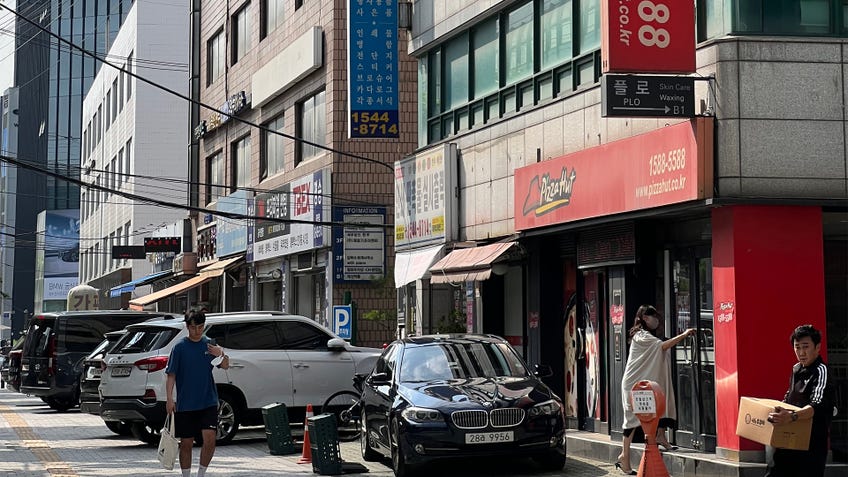
That’s not to say things have been entirely smooth sailing for Yu-Gi-Oh! in the region. Over the years the game has faced its own share of controversy as a result of translation errors causing confusion for players.
Most notably, errors in the translation of card names and effects, particularly in early years, have forced Daewon to issue corrections as both the names chosen for certain monsters and effect text have been mistranslated. One prominent example relates to the Hero archetype and Elemental Hero Stratos, whose effect to search for HERO monsters caused issues when the translation of other monster names led to a wider-than-intended pool of cards to be searchable. This eventually led to Daewon issuing a list of cards ineligible for Stratos’ effect in 2021 due to the confusion caused by translation choices into Korean, yet these corrections only exist in list form and not in subsequent reprints.
Yu-Gi-Oh!'s successful history in Korea is driven not just by the ample support from distributor Daewon but by the strength of its community and the card stores that support it.
That being said, Yu-Gi-Oh! has had an ultimately successful history in Korea, driven not just by the ample support from Daewon but by the strength of its community and the card stores that support it.
Just two months after the Yu-Gi-Oh! Trading Card Game launched in February 2004, 12 card and tabletop stores across the country had signed on with Daewon as official partners for the TCG. These stores would host weekly tournaments with official prizes and, to assist a public only just coming to grips with the game, Duelist Academies were held at a further-expanded array of stores that sought to bring players together to teach the basics of the rules.
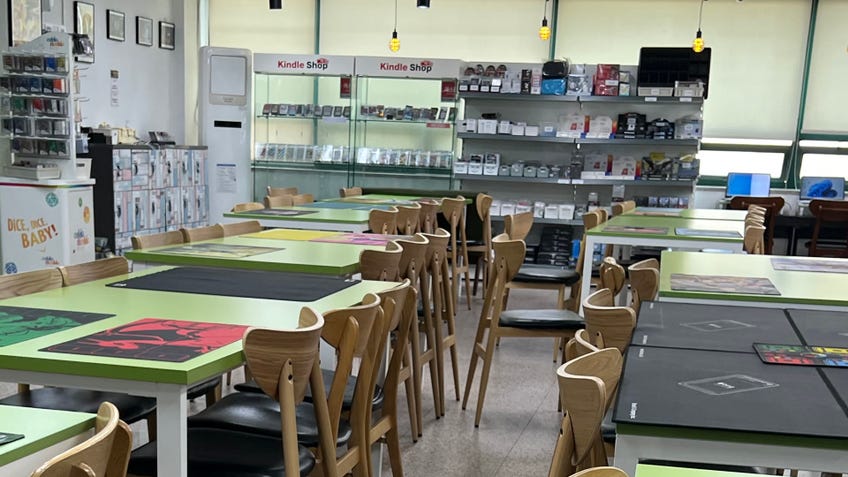
Minus these 'schools', this partnership system is what drives engagement in the game even today - the list of official tournament stores has since expanded significantly to over 40 participating retailers, including nine in the capital of Seoul alone. More than simply stocking the latest cards, these are community hubs, where fans will meet and spend hours trading, duelling and chatting about the game: alcoves of collective fun in the urban sprawl.
This was the impression I got as I entered the first store on my tour of the Korean Yu-Gi-Oh! scene, Mokdong Duel Park on the south side of the Han river. Sat in the basement of a discrete multi-storey building a few minutes walk away from Mokdong Station, the first thing greeting you is a range of posters from both Korea and Japan advertising a range of the products being sold in the store, from Yu-Gi-Oh! and Pokémon to Cardfight Vanguard and more.
The store was stocked high with a noticeable amount of Yu-Gi-Oh! product, ranging from the very earliest sets like Legend of Blue-Eyes White Dragon all the way to the newest Cyberstorm Access, with ample stock of even the oldest cards. This was a common feature across all the stores, and links to another quirk in the distribution of Yu-Gi-Oh! cards in Korea compared to other regions; not only are sets generally cheaper than those found elsewhere (a booster box of 30 packs will run around 20,000 won, or around £12/$15), but older sets will regularly be reprinted to ensure second-hand prices remain low. With this in mind, I had no choice but to pick up a box of 30 packs of Cyberstorm Access alongside a few nostalgia-fueled packs of Legend of Blue-Eyes.
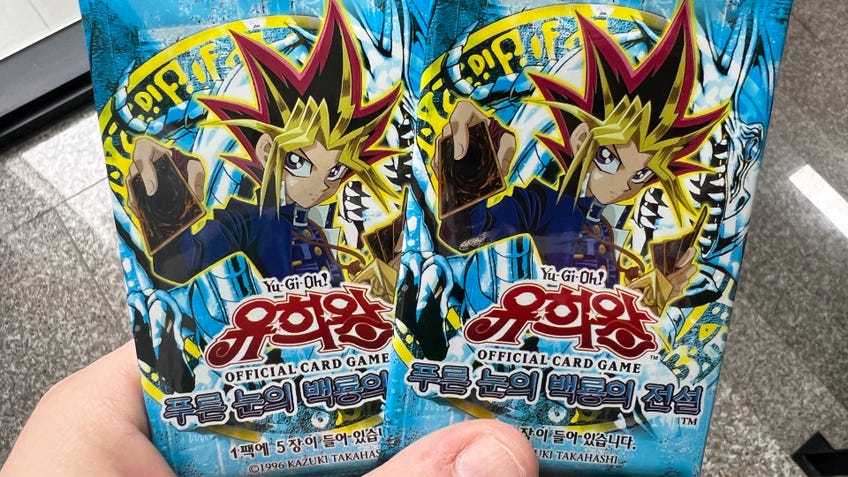
This makes collecting cards in Korean much cheaper and easier than it is in other countries. While these cards are not typically sought after by players in other regions due to rules in both the TCG and OCG limiting the use of cards outside of your native language from use in matches, those simply looking to own a piece of the game they love can jump in for specific cards or sets with relative ease.
After all, buying a booster box of the original Blue-Eyes White Dragon set for the price of a few drinks at Starbucks is far cheaper than this English first-edition box recently sold on eBay for an eye-watering £8,000 - and if all you care about collecting is the card regardless of language, isn’t it nice to have the option to buy a Korean Dark Magician Girl for 80,000 won (£49/$62) versus 850,000 won (£523/$661) for a Japanese copy?
Although the store was relatively empty not long after opening when I visited, it held semblances of a bustling interior - from its range of merch both domestic and imported for various card games to tall cases for rarer cards from Korea and Japan, and tables set up for players to duel or chat. The store also sells drinks and snacks for those who choose to stay for extended periods.
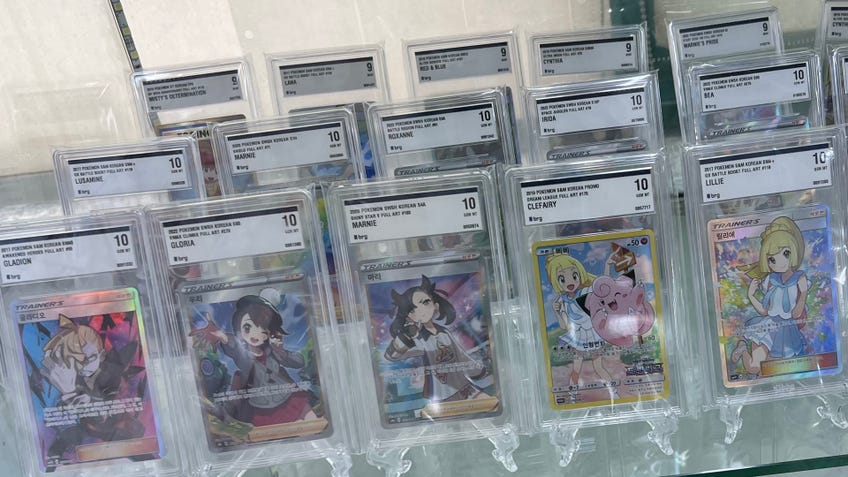
I next took a trip back over the river towards the centre of Seoul to visit Duel Kingdom in Ahyeon, which had a similar, albeit more intimate setting. Hidden on the fourth floor of a seemingly random building near Ahyeon Station, the store felt cluttered yet homely. Without storage, boxes of product lined the walls as much as the cases selling accessories and booster boxes and decks for almost every set ever released. Much of the space was taken up by duel tables, though only a few people were in the store by the time on the midweek afternoon I made it there.
It was here that I had the chance to speak to Chen, a Taiwanese player living in Korea, whose views of the game were generally positive. “There’s a lot of card stores in many places which offer great opportunities to play with other players, and I think that’s why I enjoy playing Yu-Gi-Oh! here in Korea,” they told me. “Many people duel and make friends at local tournaments. It makes the community very close. I met a lot of people thanks to Yu-Gi-Oh! and the chances I had to play with other people, and it’s definitely the reason I keep playing.”
While the Yu-Gi-Oh! community is small compared to other TCGs in South Korea, such as Magic: The Gathering, the game has remained relevant in the country due to the players and their passion.
Much of the community congregates not just in stores but on social media like the Korea-specific Naver service, a pseudo-forum-like platform that many stores and even the official Yu-Gi-Oh! Korea account use as a forum for sharing announcements, allowing fans to talk and share experiences, ask questions and more. While this doesn’t mean fans don’t also congregate on platforms such as Twitter, the ubiquity of Naver as the Google of Korea allows for a more unique and intimate community atmosphere to those found elsewhere.
Indeed, Chen acknowledged that the Yu-Gi-Oh! community is small compared to other TCGs in South Korea, such as Magic: The Gathering, they believe the reason the game has remained relevant in the country is due to the players and their passion. As someone inevitably looking into this community from the outside - as not just a traveller to another country, but someone whose rudimentary grasp of Korean humbled me after comfort speaking Japanese and English in countries where this was the standard - I still felt welcomed by staff and players alike who helped me pick up cards of my own and talk to me about my reasons for playing the game, even if these conversations were assisted a lot through translation services and the grateful knowledge of those who spoke English.
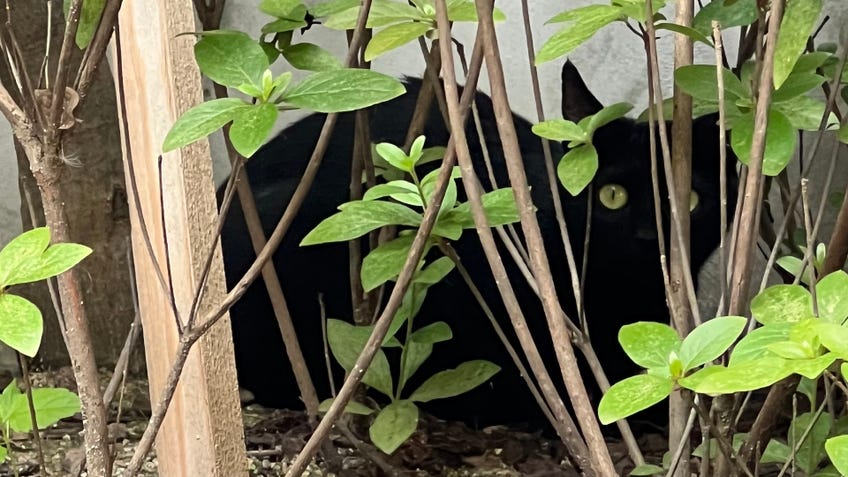
For those looking for a more accessible store to visit for buying cards and meeting other players on your next trip to South Korea, my final stop on this journey may be worth noting. KindleShop near Konkuk University Station, only a few stops on the train from the Olympic Park, had English-speaking staff on hand and upon entry certainly felt the most modern of the stores I visited. Although empty at the time, I knew this would not be the case for long - over 20 players had signed up for their midweek local tournament that staff were setting up playmats for ahead of its start in a few hours time.
The store’s staff admitted their experience with Yu-Gi-Oh! is limited, having only recently begun to stock the game over other trading card games. Yet the strong signups to these tournaments and ample selection of both singles from Korea and Japan and booster boxes suggest a successful jump into this new domain, and a sign that the game still has room to grow in the region. After all, from that initial 2004 list of stores the number of officially-partnered shops has over tripled, and Korean representatives will stake a claim for the crown at the upcoming Yu-Gi-Oh! TCG World Championships in Japan this August.
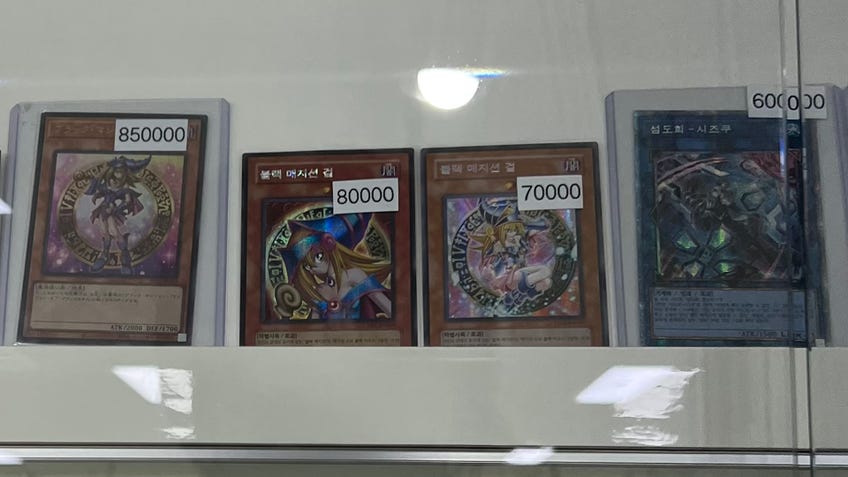
Speaking to Korean players and visiting the card stores in the bustling heart of Seoul, I was reminded not just of the local retailers that sit at the heart of the competitive scene both in Japan and internationally, but of the reason we continue to enjoy this game numerous decades on from its initial launch. These stores are the lifeblood of Yu-Gi-Oh! in Korea, a communal home for fans to hang out, play and share in the joy of a game with friends as it was always intended to be played.
Heavy support from Daewon has helped these spaces to thrive as official hubs for the game in the country, allowing newcomers to the game or those merely curious to learn more to find not just new players but new friends. It’s an incentive to keep playing this game even as newer digital alternatives and a strong supply of both imported and domestically-translated and produced competitors are released in the country.
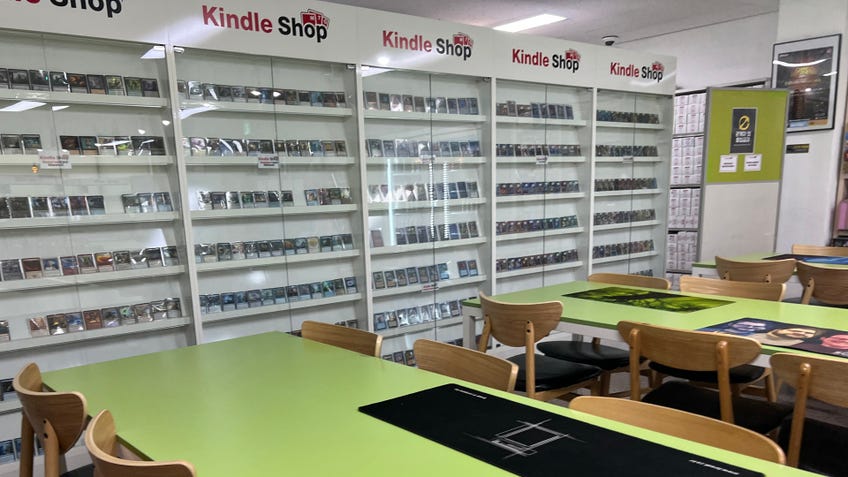
An outsider to the community can only learn so much gazing through the looking glass and speaking to a few players during an all-too-brief trip. Yet Korea’s place in the history of Yu-Gi-Oh! is often overlooked compared to the ample discussion of how the game changed the landscape of competitive card games in other regions. The history and present of the South Korean Yu-Gi-Oh! scene as an accessible, friendly space to enjoy the card game shouldn’t be ignored, and broader cross-cultural understanding should be encouraged.
As Japan-Korea relationships eased at the end of the 20th century to allow Japanese cultural imports into the country, the rise of Yu-Gi-Oh! came as a welcome sight for kids and older players alike seeking a new experience (or a chance to play the game they imported from their neighbour in a more familiar language). In the years that followed, the beating heart of its close-knit community, bundled into card stores hidden in basements of multi-storey buildings, has helped the game to establish a dedicated and ultimately welcoming following that continues to grow even 18 years on from its first official introduction into the country.
Yu-Gi-Oh! is nothing without an opponent, and Yu-Gi-Oh! in Korea is nothing without a friend.
